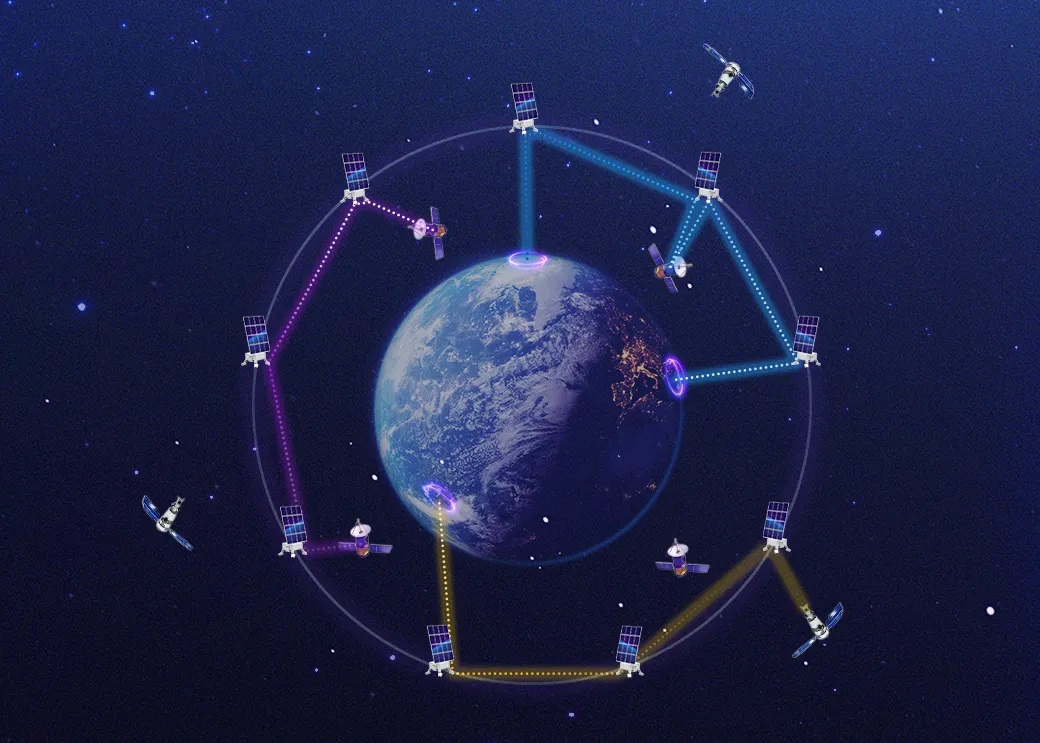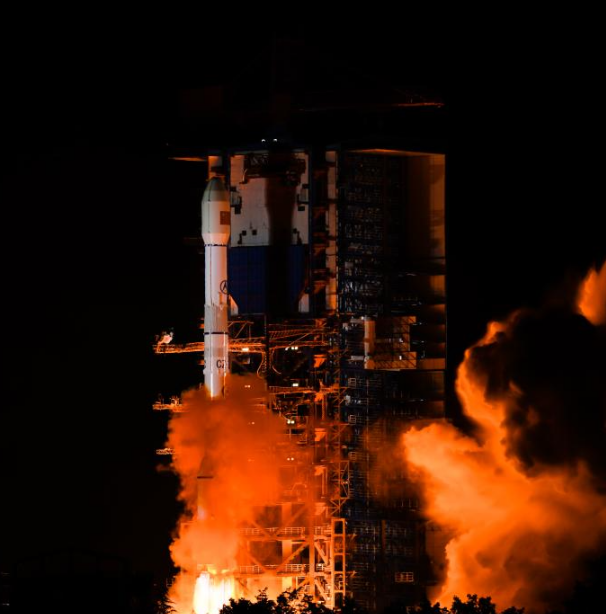20
2024-11
Kepler goes all in on optical communications

The Kepler Network aims to streamline on-orbit communications with a network infrastructure designed to act as Internet exchange points (IXP) for space-to-space data relay. Credit: Kepler Communications
NEW YORK — Kepler Communications is seeking permission to operate larger but significantly fewer satellites for its proposed data relay constellation, which would now use lasers instead of radio frequencies to connect low Earth orbit (LEO) customers.
The Canadian operator has asked the Federal Communications Commission to approve 18 satellites in total, including 10 with optical payloads slated to launch late next year, modifying a license granted in 2018 covering 140 radio frequency spacecraft about 12 kilograms in size.
Bigger satellites are needed to house optical technology that has recently reached technical maturity, Kepler CEO and co-founder Mina Mitry said, as well as propulsion for comply with new FCC rules requiring operators to de-orbit LEO spacecraft within five years after their mission ends.
“With optical data relay, we only communicate with one gateway on the ground at any given time so there is no need for 140 satellites when we can provide our customers outstanding service with a smaller constellation,” Mitry told SpaceNews via email.
“Our optical satellites have been optimized with advanced technology and are significantly larger than our heritage satellites, facilitating more efficient operations.”
Kepler announced successful optical inter-satellite link demonstrations in June between a pair of data relay prototypes in LEO, which moved terabytes of data between them over testing scenarios ranging from seconds to hours to simulate customer behavior.
The company plans to deploy operational data relay satellites across two near-orthogonal planes in sun-synchronous orbits, enabling them to provide real-time connectivity for LEO satellites that can only relay data while passing over an approved ground station.
Mitry said an initial 10 satellites, including one spare, would form a complete ring around the Earth to enable commercial services to start.
Future tranches could be added if there is market demand, requiring additional licenses.
The company’s pivot to optical technology follows a spate of government contracts, including an award last month to develop an optical relay network for Europe.
Kepler’s FCC petition also covers the two pathfinder optical spacecraft launched last year and six radio frequency satellites supporting the company’s current business, providing connectivity for remote monitoring and tracking Internet of Things (IoT) devices beyond terrestrial networks.
The operator has deployed 21 radio frequency satellites to date, starting in 2018, and expects only six to be operational in the near term as others run out of fuel and burn up in the atmosphere.
“Kepler’s focus has shifted to building our optical data relay network, but we continuously assess the market to address customer needs,” Mitry added.
“Should the demand or requirement for additional [radio frequency] capacity arise, we will take this into consideration.”
He said undisclosed customers using the company’s current IoT connectivity services would be able to transition to upcoming optical data relay spacecraft, which would also use the same Ku-band frequencies.
The FCC petition would streamline Kepler’s existing licenses, reducing them from authorizations for 140 satellites in an initial processing round and 360 from a subsequent round to just 18 spacecraft.
-
29
2025-05

Tianwen-2 Mission Launched Successfully
At 1:31 AM today, China successfully launched the Tianwen-2 planetary exploration probe from the Xichang Satellite Launch Center using the Long March-3B Y110 carrier rocket.
-
13
2025-05

Communication Technology Experiment Satellite No. 19 Successfully Launched
At 2:09 on May 13, China successfully launched the Communication Technology Experiment Satellite No. 19 from the Xichang Satellite Launch Center using a Long March 3B carrier rocket. The satellite smoothly entered its predetermined orbit, and the launch mission was a complete success.
-
12
2025-05

Remote Sensing Satellite No. 40, Group 02, Successfully Launched
On May 11 at 21:27, China successfully launched the Remote Sensing Satellite No. 40, Group 02, from the Taiyuan Satellite Launch Center using a Long March 6A carrier rocket. The satellite entered its predetermined orbit smoothly, and the launch mission was a complete success.









